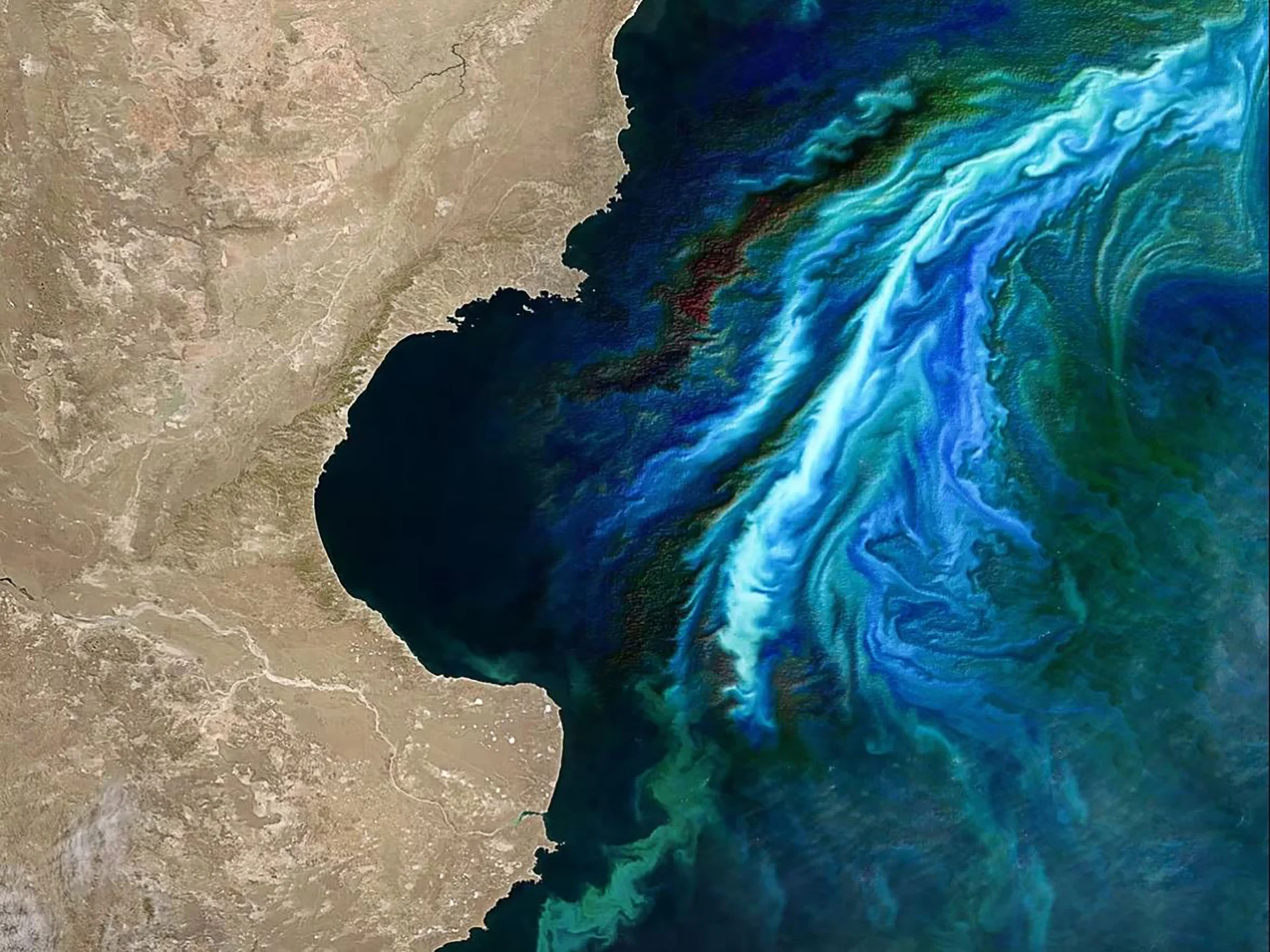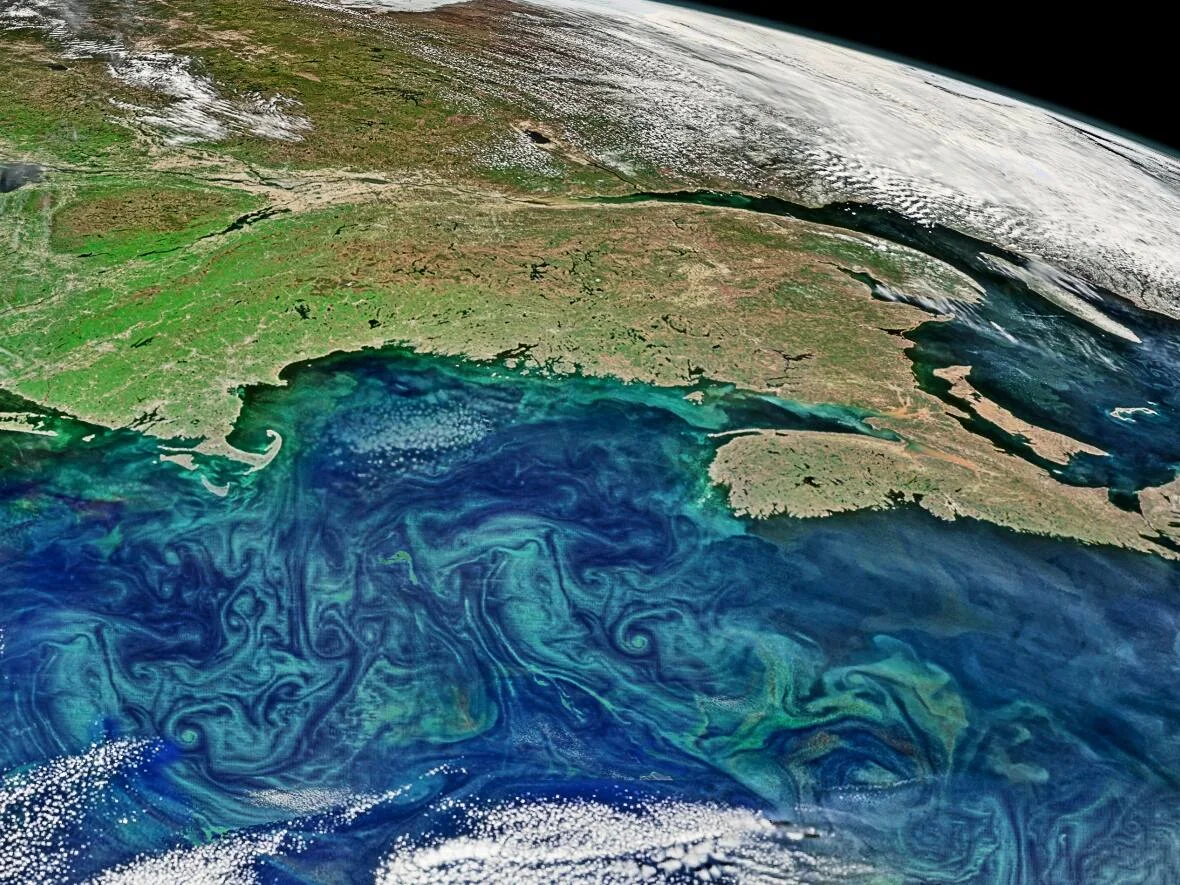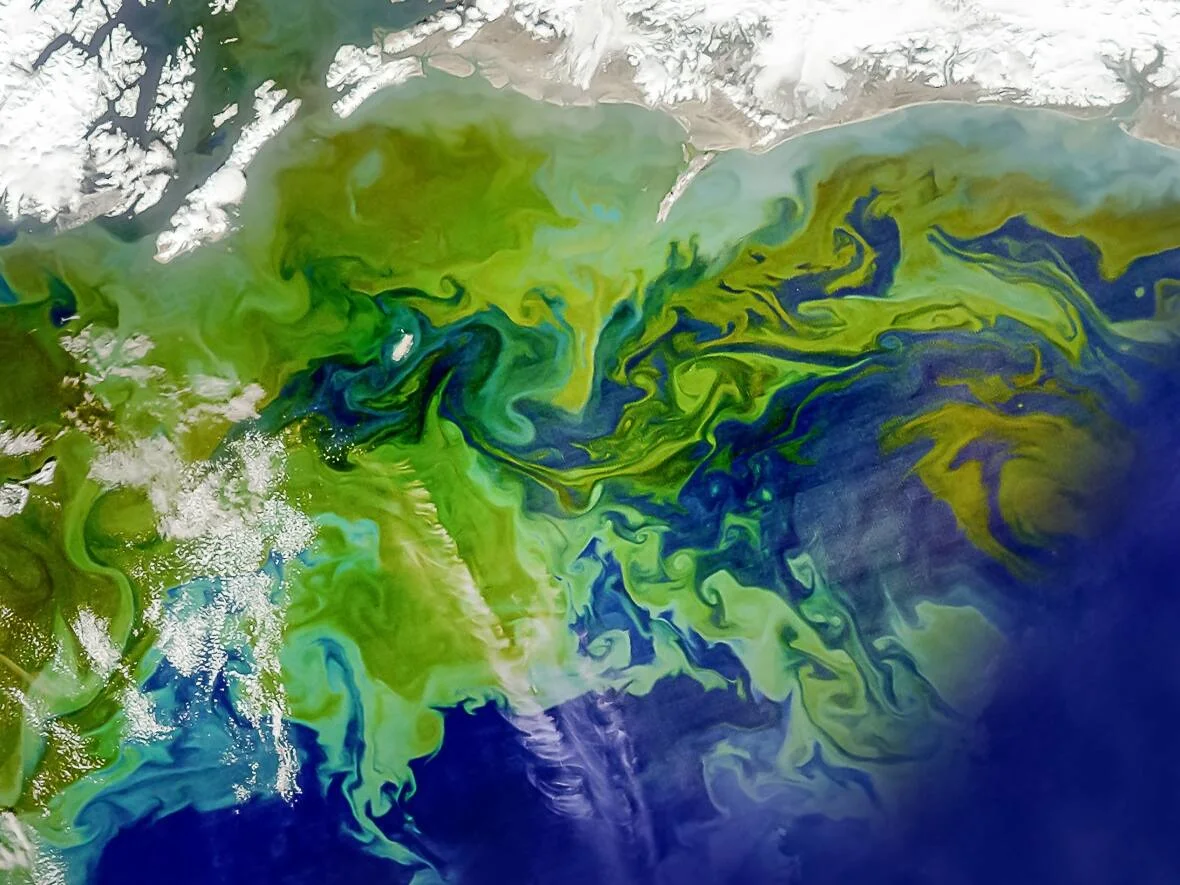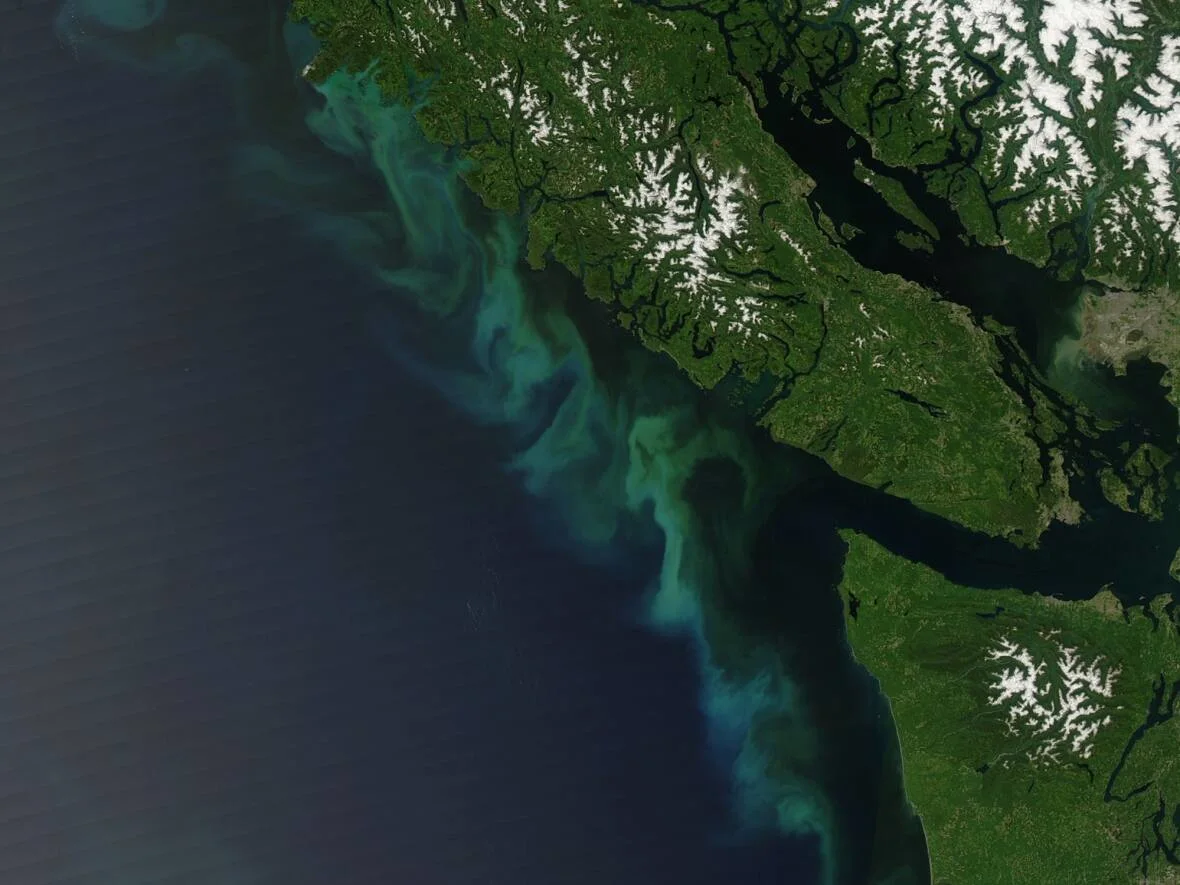
Global algae blooms are growing, and warming waters may be to blame, study says
Swirling blooms of turquoise phytoplankton along coasts may be happening more often and getting bigger, according to new research published in Nature, raising concerns about the impacts of climate change on the world's oceans.
Using data captured by NASA's Aqua satellite, scientists have tracked coastal phytoplankton blooms over 17 years, between 2003 and 2020.
Phytoplankton are microscopic algae, and a "bloom" is a sudden explosion of them, sometimes covering hundreds of square kilometres of ocean.
The study found that over that period, the global median frequency of algal blooms increased by 59 per cent, and the total area affected by the blooms expanded by nearly 4 million square kilometres — close to half the size of Canada.
READ MORE: We just had one of the hottest years on record; El Niño could make it worse
The study highlighted links between the surge in blooms and climate change, specifically increased ocean surface temperature and changes in ocean circulation.
While phytoplankton are a fundamental source of food for marine life, and generally linked to healthy oceans and productive fisheries, the findings also raise concerns. As the old saying goes, it's possible to have too much of a good thing.
Overabundance and dead zones
Daniel Boyce, a co-author on the study and a research scientist with Fisheries and Oceans Canada, said when there's a rapid growth of phytoplankton, the algae sometimes grow faster than they are consumed.
When those algae die, they are decomposed by bacteria, which in turn use up oxygen and produce carbon dioxide, essentially suffocating life and creating dead zones.
"We have these big fish die offs and it's really hazardous to marine life," he said.
The satellite data collected by Boyce and his colleagues isn't able to determine whether the blooms were harmful or not, which is why the study authors say more research is needed.
"It's troubling because it's a change. We don't know if this is a good change or a bad change," Boyce said.
"This study highlights that there is a change that's happening. It's related to climate change. We know that it could be a bad thing for marine life and for fisheries and for healthy oceans, but we just don't know."

Phytoplankton blooms, seen here in an aerial view captured by a satellite and enhanced to shade the data, can be beneficial to marine life and fisheries. But if phytoplankton blooms are overabundant at the wrong time, they can suffocate life and create dead zones. (Lian Feng)
Previous research has suggested the warming ocean could contribute to an overall decline in phytoplankton. The study authors say what they found was that the extreme temperature fluctuations caused by climate change may also be linked to more frequent and larger blooms on a global scale.
"Although overall the plankton levels are declining, we're also getting these extreme pulses," Boyce said.
Tiny organisms support life in oceans and on land
The paper adds to a growing body of research into how the warming ocean may affect the tiny organisms.
"We cannot sample the ocean everywhere, every time in a single millimetre space. So that's when the satellite data becomes quite useful," said Maycira Costa, a professor who specializes in coastal oceanography at the University of Victoria.
In her research along the coast of British Columbia, Costa has not seen an increase in the number of phytoplankton blooms, though she noted that definitions of what counts as a "bloom" vary between the local and global scale.
One trend that Costa has noticed is a shift in bloom timing.
She said during El Niño years, when the ocean tends to be warmer, phytoplankton blooms off the B.C. coast can happen earlier in the spring. That may cause a timing mismatch with zooplankton, she said.
Zooplankton, which are tiny marine animals, eat phytoplankton. If their populations explode at different times, there could a chain reaction affecting the larger creatures that eat zooplankton, and so on.

Phytoplankton support life on land and in the water — providing food for the oceans and producing oxygen for the atmosphere. (Lian Feng)
"There could be a cascading phenomenon happening all the way to … wild salmon," Costa said.
While phytoplankton are small, they are crucial to life on land and in the water, Costa said. Not only are they a cornerstone of marine life, the organisms are also one of the largest contributors to oxygen in the atmosphere.
"We do exist in part because of the phytoplankton," she said.
Costa said more research is needed on the regional level to understand how blooms may change as the climate changes, and how that might impact larger ecosystems.

*Phytoplankton blooms, shown here off the coast of Vancouver Island, are pictured on June 25, 2006 in an image captured by the Moderate Resolution Imaging Spectroradiometer (MODIS) on NASA’s Aqua satellite. (Jeff Schmaltz/NASA) *
This article, written by Jaela Bernstien, was originally published by CBC News.
Thumbnail image: This spectacular view of intensifying phytoplankton blooms was captured by NASA's Aqua satellite and then shaded by researchers to illustrate the data captured. (Lian Feng)










